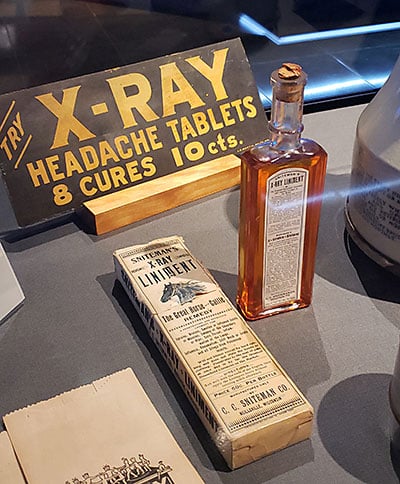It can be argued that the discovery of the x-ray by German physicist Wilhelm Conrad Roentgen on Nov. 8, 1895, was one of the most significant milestones in health care. His accidental discovery forever changed medicine and it has been a key tool in diagnosing and treating injuries and diseases for 128 years.
The news of Roentgen’s discovery spread quickly and far beyond its intended use. The general public’s interest in the newfound ability to photograph the inside of the body fueled imagination that brought misunderstandings and quackery. Photography studios began offering bone portraits. Detectives reportedly used x-rays to determine if spouses were unfaithful. X-ray glasses were said to allow users to see through or into solid objects. X-rays were used metaphorically as entertainment in political cartoons, newspaper stories and advertising.

The ASRT Museum and Archives located in Albuquerque, New Mexico, offers artifacts that manufacturers and advertisers in the early 1900s used to capitalize on the public’s fascination of the x-ray. On display is an advertisement for x-ray headache tablets that offered eight doses for 10 cents and an original bottle of x-ray horse liniment that advertises, “No farmer or stockman should be without.” Of course, none of these products had anything to do with x-rays and did not emit radiation.
Despite early-day misunderstandings, only two months after its discovery doctors in Europe and the United States were using x-rays for clinical purposes, to identify broken bones, tumors and foreign objects. The discovery also paved the way for the development of radiologic science modalities used today like computed tomography, mammography, nuclear medicine, radiation therapy and many others. For his work, Roentgen was awarded the first Nobel Prize in physics in 1901.
According to the World Health Organization, there are an estimated 3.6 billion diagnostic x-ray examinations performed annually in hospitals, clinics and health care settings worldwide. In addition, there are more than 450,000 registered radiologic technologists in the U.S., the health care professionals who perform medical imaging and radiation therapy procedures; they make up the third-largest group of health care professionals surpassed in number only by physicians and nurses.
Since 1979, the American Society of Radiologic Technologistshas celebrated National Radiologic Technology Week® during the week of Nov. 8 to honor Roentgen’s discovery and recognize the vital work of medical imaging and radiation therapy professionals in patient care and health care safety. This year’s NRTW is Nov. 5-11, and the theme is “Patients Are Our Passion; Safety Is Our Priority.”